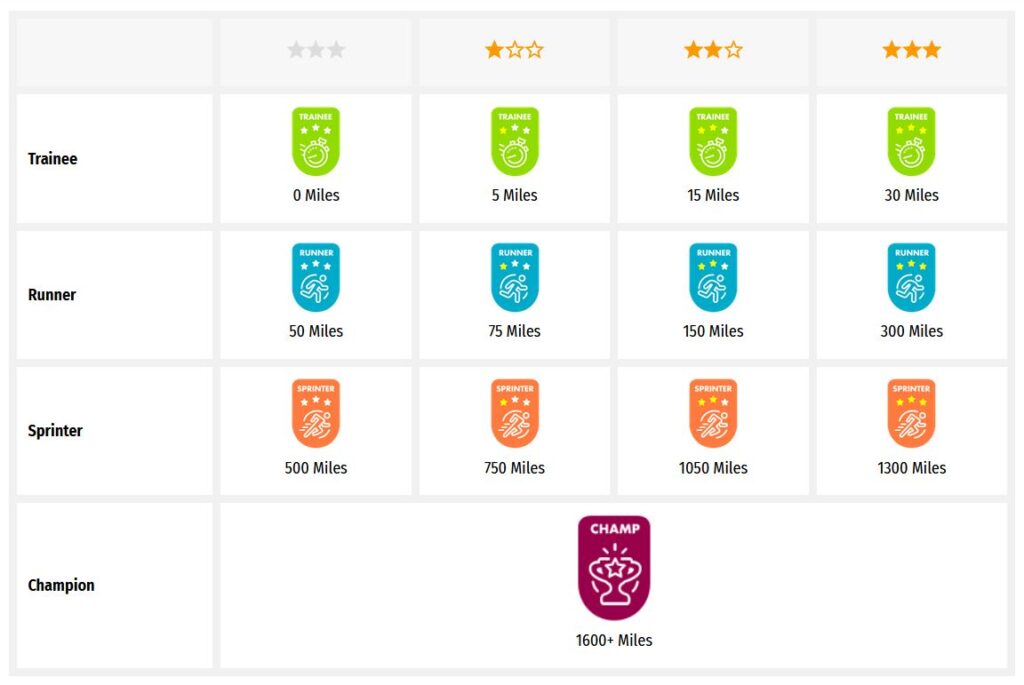Someone else is currently editing this document
Only one person can work on a document at a time
TRANSCRIPTION
Wow. That's an amazing book "Another VAD exhausted. Post Armistice the new disease. Is there a remedy? Reduced energy, overstrained nerves, reduced enthusiasm, restlessness of parents, VAD members wanted a home, these signs are the natural result of November 11th 1918." That's interesting, post Armistice exhaustion.
That's the VAD scarf that they had.
This marks an anniversary.
1960. This is the last lot they did and they had these. I mean we're losing all our VADs now but there was some kind of ceremony they had and it's 1917 to 1960. I think it's lovely.
This is a classic, a frame. What's in the frame?
Well you've got a capsule that was attached to a pigeon and inside there it says "we are sending £2,000 for more pay VAD at Devonshire House. War bonds and War savings."
The post mark is a tank and it says "15".
I'm not sure if this is Margaret Amptill ( Lady Ampthill) but it would be. I don't know what happened to it.
Well it must have been received because you're holding it.
Trafalgar Square, does it say?
Yes.
By pigeon service dated 9th March 1918.
So your hope is that you'll have your nurses War memorial?
Well part of it is the memorial. The other part of it is to set up a scholarship to train a nurse in our days in humanitarian aid, so she can take that through. Most nursing has come out of conflict. We take it for granted, triage nursing for example, where casualties are prioritised. We do that in hospital nowadays and people don't realise how it actually developed. I suppose if we went back to the First World War I would think field dressing, that sort of thing, bandaging I suppose. It's all come on. Trauma nursing you know. So if we could put in place a scholarship where a nurse could further educate herself in humanitarian aid I think it would benefit everybody.
So that's part of the mission of the charity?
Yes. It's the other side of it. It's not just a memorial; it's a memorial with names. You’ve got a memorial to Florence Nightingale, Museum to her, there are some names of VADs in Yorkminster commemorated and it's in a wooden plaque on the screen but there is nowhere in this country where all the nurses that were killed in service where it is commemorated. That is disgraceful in that day and age.
Yes, and when you look at the numbers too.
Yes, 70,000 to 100,000 they reckon signed up. I mean those men that wrote the letters too, they would be horrified if they thought they'd just been ignored.
Yes of course and everything we've seen from VADs, it's the same tale. It's tale of gratitude from the men who received the care in their darkest hour. A lot of them didn't survive but those did; their letters of thanks, commendation and goodwill. We're sitting next to stuff from 1914 - 100 years old.
Language(s) of Transcription
LOCATION
ABOUT THIS DOCUMENT
Document Date
Document Type
Document Description
Language of Description
Keywords
People
Florence Nightingale (Birth: 18/05/1820, Firenze - Death: 13/08/1910, London)
Margaret Russell (Birth: 08/10/1874 - Death: 12/12/1957)
Description: Lady Ampthill
STORY INFORMATION
Title
A brief history of the Voluntary Aid Detachment
Source
UGC
Book
Contributor
europeana19141918:agent/3339d282f4d447802f29e6d48053aa5c
Date
1899
Type
Story
Language
eng
English
Country
Europe
DataProvider
Europeana 1914-1918
Provider
Europeana 1914-1918
Rights
http://creativecommons.org/publicdomain/zero/1.0/ http://creativecommons.org/licenses/by-sa/3.0/Year
1899
DatasetName
2020601_Ag_ErsterWeltkrieg_EU
Begin
1899
End
1899
Language
mul
Agent
The New Cavendish Club | europeana19141918:agent/3339d282f4d447802f29e6d48053aa5c
Lady Ampthill | europeana19141918:agent/6a48bae445cf0521d045ae5914ecd8a4
Created
2019-09-11T08:33:24.880Z
2020-02-25T08:34:24.380Z
1918
Provenance
COTGW_CAV
Story Description
Cornwall HallOfficial documentHome FrontIncome & expenditure recordsDinner menu, Cornwall HallCornwall Hall hospitalPhotographNurse AnsonMultiplepage from the New Cavendish Club's scrapbook (relating to Cornwall Hall)Letter regarding Queen AlexandraLetterWomenVAD nursesA patient convalescingMedicalPublicationNewspaper article: Lloyd GeorgeA Hymn for WartimeOtherWards 1 & 2Christmas 1916Easter 191751.27241000000001,0.19089800000006107the family groupprograme, Cornwall HallMemorabiliaNewspaper article; men aged 16 and 60, both woundedEntertainmentPoemPoem: 10 little VAD;sLetter regarding the CommandantNurse Hearson and Sister CrumpBookVAD ABC book (poems)'A' is for the artist who stuck on night duty, drew this by candlelight, wrecking her beauty'C' is for Canada, valant and true, whose sons make the Huns look decidedly blu'G' are the grouses one has to suppress, at being cut off from more picturesque dress'Quatermaster', (I'm thankful, aren't you, such a person exists because quagga won't do) 'W - The Woodbines they smoke by the score, like Oliver Twist we are asking for more'Z' is the Zeal that inspires ev'ry one, to make their own hospital second to noneSyringe, from the WWI archive at the New Cavendish ClubHypodermic tablets, from the WWI archive at the New Cavendish ClubOptical medical equipment from Cornwall HallArmistice Day...
TRANSCRIPTION
LOCATION
DESCRIPTION
PEOPLE
STORY INFO
TUTORIAL
Wow. That's an amazing book "Another VAD exhausted. Post Armistice the new disease. Is there a remedy? Reduced energy, overstrained nerves, reduced enthusiasm, restlessness of parents, VAD members wanted a home, these signs are the natural result of November 11th 1918." That's interesting, post Armistice exhaustion.
That's the VAD scarf that they had.
This marks an anniversary.
1960. This is the last lot they did and they had these. I mean we're losing all our VADs now but there was some kind of ceremony they had and it's 1917 to 1960. I think it's lovely.
This is a classic, a frame. What's in the frame?
Well you've got a capsule that was attached to a pigeon and inside there it says "we are sending £2,000 for more pay VAD at Devonshire House. War bonds and War savings."
The post mark is a tank and it says "15".
I'm not sure if this is Margaret Amptill ( Lady Ampthill) but it would be. I don't know what happened to it.
Well it must have been received because you're holding it.
Trafalgar Square, does it say?
Yes.
By pigeon service dated 9th March 1918.
So your hope is that you'll have your nurses War memorial?
Well part of it is the memorial. The other part of it is to set up a scholarship to train a nurse in our days in humanitarian aid, so she can take that through. Most nursing has come out of conflict. We take it for granted, triage nursing for example, where casualties are prioritised. We do that in hospital nowadays and people don't realise how it actually developed. I suppose if we went back to the First World War I would think field dressing, that sort of thing, bandaging I suppose. It's all come on. Trauma nursing you know. So if we could put in place a scholarship where a nurse could further educate herself in humanitarian aid I think it would benefit everybody.
So that's part of the mission of the charity?
Yes. It's the other side of it. It's not just a memorial; it's a memorial with names. You’ve got a memorial to Florence Nightingale, Museum to her, there are some names of VADs in Yorkminster commemorated and it's in a wooden plaque on the screen but there is nowhere in this country where all the nurses that were killed in service where it is commemorated. That is disgraceful in that day and age.
Yes, and when you look at the numbers too.
Yes, 70,000 to 100,000 they reckon signed up. I mean those men that wrote the letters too, they would be horrified if they thought they'd just been ignored.
Yes of course and everything we've seen from VADs, it's the same tale. It's tale of gratitude from the men who received the care in their darkest hour. A lot of them didn't survive but those did; their letters of thanks, commendation and goodwill. We're sitting next to stuff from 1914 - 100 years old.
- English (English)
Wow. That's an amazing book "Another VAD exhausted. Post Armistice the new disease. Is there a remedy? Reduced energy, overstrained nerves, reduced enthusiasm, restlessness of parents, VAD members wanted a home, these signs are the natural result of November 11th 1918." That's interesting, post Armistice exhaustion.
That's the VAD scarf that they had.
This marks an anniversary.
1960. This is the last lot they did and they had these. I mean we're losing all our VADs now but there was some kind of ceremony they had and it's 1917 to 1960. I think it's lovely.
This is a classic, a frame. What's in the frame?
Well you've got a capsule that was attached to a pigeon and inside there it says "we are sending £2,000 for more pay VAD at Devonshire House. War bonds and War savings."
The post mark is a tank and it says "15".
I'm not sure if this is Margaret Amptill ( Lady Ampthill) but it would be. I don't know what happened to it.
Well it must have been received because you're holding it.
Trafalgar Square, does it say?
Yes.
By pigeon service dated 9th March 1918.
So your hope is that you'll have your nurses War memorial?
Well part of it is the memorial. The other part of it is to set up a scholarship to train a nurse in our days in humanitarian aid, so she can take that through. Most nursing has come out of conflict. We take it for granted, triage nursing for example, where casualties are prioritised. We do that in hospital nowadays and people don't realise how it actually developed. I suppose if we went back to the First World War I would think field dressing, that sort of thing, bandaging I suppose. It's all come on. Trauma nursing you know. So if we could put in place a scholarship where a nurse could further educate herself in humanitarian aid I think it would benefit everybody.
So that's part of the mission of the charity?
Yes. It's the other side of it. It's not just a memorial; it's a memorial with names. You’ve got a memorial to Florence Nightingale, Museum to her, there are some names of VADs in Yorkminster commemorated and it's in a wooden plaque on the screen but there is nowhere in this country where all the nurses that were killed in service where it is commemorated. That is disgraceful in that day and age.
Yes, and when you look at the numbers too.
Yes, 70,000 to 100,000 they reckon signed up. I mean those men that wrote the letters too, they would be horrified if they thought they'd just been ignored.
Yes of course and everything we've seen from VADs, it's the same tale. It's tale of gratitude from the men who received the care in their darkest hour. A lot of them didn't survive but those did; their letters of thanks, commendation and goodwill. We're sitting next to stuff from 1914 - 100 years old.
Language(s) of Transcription
English Translation
Transcription History
Wow. That's an amazing book "Another VAD exhausted. Post Armistice the new disease. Is there a remedy? Reduced energy, overstrained nerves, reduced enthusiasm, restlessness of parents, VAD members wanted a home, these signs are the natural result of November 11th 1918." That's interesting, post Armistice exhaustion. That's the VAD scarf that they had. This marks an anniversary. 1960. This is the last lot they did and they had these. I mean we're losing all our VADs now but there was some kind of ceremony they had and it's 1917 to 1960. I think it's lovely. This is a classic, a frame. What's in the frame? Well you've got a capsule that was attached to a pigeon and inside there it says "we are sending £2,000 for more pay VAD at Devonshire House. War bonds and War savings." The post mark is a tank and it says "15". I'm not sure if this is Margaret Amptill ( Lady Ampthill) but it would be. I don't know what happened to it. Well it must have been received because you're holding it. Trafalgar Square, does it say? Yes. By pigeon service dated 9th March 1918. So your hope is that you'll have your nurses War memorial? Well part of it is the memorial. The other part of it is to set up a scholarship to train a nurse in our days in humanitarian aid, so she can take that through. Most nursing has come out of conflict. We take it for granted, triage nursing for example, where casualties are prioritised. We do that in hospital nowadays and people don't realise how it actually developed. I suppose if we went back to the First World War I would think field dressing, that sort of thing, bandaging I suppose. It's all come on. Trauma nursing you know. So if we could put in place a scholarship where a nurse could further educate herself in humanitarian aid I think it would benefit everybody. So that's part of the mission of the charity? Yes. It's the other side of it. It's not just a memorial; it's a memorial with names. You’ve got a memorial to Florence Nightingale, Museum to her, there are some names of VADs in Yorkminster commemorated and it's in a wooden plaque on the screen but there is nowhere in this country where all the nurses that were killed in service where it is commemorated. That is disgraceful in that day and age. Yes, and when you look at the numbers too. Yes, 70,000 to 100,000 they reckon signed up. I mean those men that wrote the letters too, they would be horrified if they thought they'd just been ignored. Yes of course and everything we've seen from VADs, it's the same tale. It's tale of gratitude from the men who received the care in their darkest hour. A lot of them didn't survive but those did; their letters of thanks, commendation and goodwill. We're sitting next to stuff from 1914 - 100 years old.
Wow. That's an amazing book "Another VAD exhausted. Post Armistice the new disease. Is there a remedy? Reduced energy, overstrained nerves, reduced enthusiasm, restlessness of parents, VAD members wanted a home, these signs are the natural result of November 11th 1918." That's interesting, post Armistice exhaustion. That's the VAD scarf that they had. This marks an anniversary. 1960. This is the last lot they did and they had these. I mean we're losing all our VADs now but there was some kind of ceremony they had and it's 1917 to 1960. I think it's lovely. This is a classic, a frame. What's in the frame? Well you've got a capsule that was attached to a pigeon and inside there it says "we are sending £2,000 for more pay VAD at Devonshire House. War bonds and War savings." The post mark is a tank and it says "15". I'm not sure if this is Margaret Amptill ( Lady Ampthill ) but it would be. I don't know what happened to it. Well it must have been received because you're holding it. Trafalgar Square, does it say? Yes. By pigeon service dated 9th March 1918. So your hope is that you'll have your nurses War memorial? Well part of it is the memorial. The other part of it is to set up a scholarship to train a nurse in our days in humanitarian aid, so she can take that through. Most nursing has come out of conflict. We take it for granted, triage nursing for example, where casualties are prioritised. We do that in hospital nowadays and people don't realise how it actually developed. I suppose if we went back to the First World War I would think field dressing, that sort of thing, bandaging I suppose. It's all come on. Trauma nursing you know. So if we could put in place a scholarship where a nurse could further educate herself in humanitarian aid I think it would benefit everybody. So that's part of the mission of the charity? Yes. It's the other side of it. It's not just a memorial; it's a memorial with names. You’ve got a memorial to Florence Nightingale, Museum to her, there are some names of VADs in Yorkminster commemorated and it's in a wooden plaque on the screen but there is nowhere in this country where all the nurses that were killed in service where it is commemorated. That is disgraceful in that day and age. Yes, and when you look at the numbers too. Yes, 70,000 to 100,000 they reckon signed up. I mean those men that wrote the letters too, they would be horrified if they thought they'd just been ignored. Yes of course and everything we've seen from VADs, it's the same tale. It's tale of gratitude from the men who received the care in their darkest hour. A lot of them didn't survive but those did; their letters of thanks, commendation and goodwill. We're sitting next to stuff from 1914 - 100 years old.
Wow. That's an amazing book "Another VAD exhausted. Post Armistice the new disease. Is there a remedy? Reduced energy, overstrained nerves, reduced enthusiasm, restlessness of parents, VAD members wanted a home, these signs are the natural result of November 11th 1918." That's interesting, post Armistice exhaustion. That's the VAD scarf that they had. This marks an anniversary. 1960. This is the last lot they did and they had these. I mean we're losing all our VADs now but there was some kind of ceremony they had and it's 1917 to 1960. I think it's lovely. This is a classic, a frame. What's in the frame? Well you've got a capsule that was attached to a pigeon and inside there it says "we are sending £2,000 for more pay VAD at Devonshire House. War bonds and War savings." The post mark is a tank and it says "15". I'm not sure if this is Margaret Amptill ( Lady Ampthill ) but it would be. I don't know what happened to it. Well it must have been received because you're holding it. Trafalgar Square, does it say? Yes. By pigeon service dated 9th March 1918. So your hope is that you'll have your nurses War memorial? Well part of it is the memorial. The other part of it is to set up a scholarship to train a nurse in our days in humanitarian aid, so she can take that through. Most nursing has come out of conflict. We take it for granted, triage nursing for example, where casualties are prioritised. We do that in hospital nowadays and people don't realise how it actually developed. I suppose if we went back to the First World War I would think field dressing, that sort of thing, bandaging I suppose. It's all come on. Trauma nursing you know. So if we could put in place a scholarship where a nurse could further educate herself in humanitarian aid I think it would benefit everybody. So that's part of the mission of the charity? Yes. It's the other side of it. It's not just a memorial; it's a memorial with names. You’ve got a memorial to Florence Nightingale, Museum to her, there are some names of VADs in Yorkminster commemorated and it's in a wooden plaque on the screen but there is nowhere in this country where all the nurses that were killed in service where it is commemorated. That is disgraceful in that day and age. Yes, and when you look at the numbers too. Yes, 70,000 to 100,000 they reckon signed up. I mean those men that wrote the letters too, they would be horrified if they thought they'd just been ignored. Yes of course and everything we've seen from VADs, it's the same tale. It's tale of gratitude from the men who received the care in their darkest hour. A lot of them didn't survive but those did; their letters of thanks, commendation and goodwill. We're sitting next to stuff from 1914 - 100 years old.
Wow. That's an amazing book "Another VAD exhausted. Post Armistice the new disease. Is there a remedy? Reduced energy, overstrained nerves, reduced enthusiasm, restlessness of parents, VAD members wanted a home, these signs are the natural result of November 11th 1918." That's interesting, post Armistice exhaustion. That's the VAD scarf that they had. This marks an anniversary. 1960. This is the last lot they did and they had these. I mean we're losing all our VADs now but there was some kind of ceremony they had and it's 1917 to 1960. I think it's lovely. This is a classic, a frame. What's in the frame? Well you've got a capsule that was attached to a pigeon and inside there it says "we are sending £2,000 for more pay VAD at Devonshire House. War bonds and War savings." The post mark is a tank and it says "15". I'm not sure if this is Margaret Amptill ( Lady Ampthill ) but it would be. I don't know what happened to it. Well it must have been received because you're holding it. Trafalgar Square, does it say? Yes. By pigeon service dated 9th March 1918. So your hope is that you'll have your nurses War memorial? Well part of it is the memorial. The other part of it is to set up a scholarship to train a nurse in our days in humanitarian aid, so she can take that through. Most nursing has come out of conflict. We take it for granted, triage nursing for example, where casualties are prioritised. We do that in hospital nowadays and people don't realise how it actually developed. I suppose if we went back to the First World War I would think field dressing, that sort of thing, bandaging I suppose. It's all come on. Trauma nursing you know. So if we could put in place a scholarship where a nurse could further educate herself in humanitarian aid I think it would benefit everybody. So that's part of the mission of the charity? Yes. It's the other side of it. It's not just a memorial; it's a memorial with names. You’ve got a memorial to Florence Nightingale, Museum to her, there are some names of VADs in Yorkminster commemorated and it's in a wooden plaque on the screen but there is nowhere in this country where all the nurses that were killed in service where it is commemorated. That is disgraceful in that day and age. Yes, and when you look at the numbers too. Yes 70,000 to 100,000 they reckon signed up. I mean those men that wrote the letters too, they would be horrified if they thought they'd just been ignored. Yes of course and everything we've seen from the VADs, it's the same tale. It's tale of gratitude from the men who received the care in their darkest hour. A lot of them didn't survive but those did; their letters of thanks, commendation and goodwill. We're sitting next to stuff from 1914 - 100 years old.
Wow. That's an amazing book "Another VAD exhausted. Post Armistice the new disease. Is there a remedy? Reduced energy, overstrained nerves, reduced enthusiasm, restlessness of parents, VAD members wanted a home, these signs are the natural result of November 11th 1918." That's interesting, post Armistice exhaustion. That's the VAD scarf that they had. This marks an anniversary. 1960. This is the last lot they did and they had these. I mean we're losing all our VADs now but there was some kind of ceremony they had and it's 1917 to 1960. I think it's lovely. This is a classic, a frame. What's in the frame? Well you've got a capsule that was attached to a pigeon and inside there it says "we are sending £2,000 for more pay VAD at Devonshire House. War bonds and War savings." The post mark is a tank and it says "15". I'm not sure if this is Margaret Amptill Ampthill but it would be. I don't know what happened to it. Well it must have been received because you're holding it. Trafalgar Square, does it say? Yes. By pigeon service dated 9th March 1918. So your hope is that you'll have your nurses War memorial? Well part of it is the memorial. The other part of it is to set up a scholarship to train a nurse in our days in humanitarian aid, so she can take that through. Most nursing has come out of conflict. We take it for granted, triage nursing for example, where casualties are prioritised. We do that in hospital nowadays and people don't realise how it actually developed. I suppose if we went back to the First World War I would think field dressing, that sort of thing, bandaging I suppose. It's all come on. Trauma nursing you know. So if we could put in place a scholarship where a nurse could further educate herself in humanitarian aid I think it would benefit everybody. So that's part of the mission of the charity? Yes. It's the other side of it. It's not just a memorial; it's a memorial with names. You’ve got a memorial to Florence Nightingale, Museum to her, there are some names of VADs in Yorkminster commemorated and it's in a wooden plaque on the screen but there is nowhere in this country where all the nurses that were killed in service where it is commemorated. That is disgraceful in that day and age. Yes, and when you look at the numbers too. Yes 70,000 to 100,000 they reckon signed up. I mean those men that wrote the letters too, they would be horrified if they thought they'd just been ignored. Yes of course and everything we've seen from the VADs, it's the same tale. It's tale of gratitude from the men who received the care in their darkest hour. A lot of them didn't survive but those did; their letters of thanks, commendation and goodwill. We're sitting next to stuff from 1914 - 100 years old.
Wow. That's an amazing book "Another VAD exhausted. Post Armistice the new disease. Is there a remedy? Reduced energy, overstrained nerves, reduced enthusiasm, restlessness of parents, VAD members wanted a home, these signs are the natural result of November 11th 1918." That's interesting, post Armistice exhaustion. That's the VAD scarf that they had. This marks an anniversary. 1960. This is the last lot they did and they had these. I mean we're losing all our VADs now but there was some kind of ceremony they had and it's 1917 to 1960. I think it's lovely. This is a classic, a frame. What's in the frame? Well you've got a capsule that was attached to a pigeon and inside there it says "we are sending £2,000 for more pay VAD at Devonshire House. War bonds and War savings." The post mark is a tank and it says "15". I'm not sure if this is Margaret Amptill but it would be. I don't know what happened to it. Well it must have been received because you're holding it. Trafalgar Square, does it say? Yes. By pigeon service dated 9th March 1918. So your hope is that you'll have your nurses War memorial? Well part of it is the memorial. The other part of it is to set up a scholarship to train a nurse in our days in humanitarian aid, so she can take that through. Most nursing has come out of conflict. We take it for granted, triage nursing for example, where casualties are prioritised. We do that in hospital nowadays and people don't realise how it actually developed. I suppose if we went back to the First World War I would think field dressing, that sort of thing, bandaging I suppose. It's all come on. Trauma nursing you know. So if we could put in place a scholarship where a nurse could further educate herself in humanitarian aid I think it would benefit everybody. So that's part of the mission of the charity? Yes. It's the other side of it. It's not just a memorial; it's a memorial with names. You’ve got a memorial to Florence Nightingale, Museum to her, there are some names of VADs in Yorkminster commemorated and it's in a wooden plaque on the screen but there is nowhere in this country where all the nurses that were killed in service where it is commemorated. That is disgraceful in that day and age. Yes, and when you look at the numbers too. Yes 70,000 to 100,000 they reckon signed up. I mean those men that wrote the letters too, they would be horrified if they thought they'd just been ignored. Yes of course and everything we've seen from the VADs, it's the same tale. It's tale of gratitude from the men who received the care in their darkest hour. A lot of them didn't survive but those did; their letters of thanks, commendation and goodwill. We're sitting next to stuff from 1914 - 100 years old.
Wow. That's an amazing book "Another VAD exhausted. Post Armistice the new disease. Is there a remedy? Reduced energy, overstrained nerves, reduced entusiasm, restlessness of parents, VAD members wanted a home, these signs are the natural result of November 11th 1918." That's interesting, post Armistice exhaustion. That's the VAD scarf that they had. This marks an anniversary. 1960. This is the last lot they did and they had these. I mean we're losing all our VADs now but there was some kind of ceremony they had and it's 1917 to 1960. I think it's lovely. This is a classic, a frame. What's in the frame? Well you've got a capsule that was attached to a pigeon and inside there it says "we are sending £2,000 for more pay VAD at Devonshire House. War bonds and War savinds." The post mark is a tank and it says "15". I'm not sure if this is Margaret Amptill but it would be. I don't know what happened to it. Well it mus have been received because you're holding it. Trafalgar Square, does it say? Yes. By pigeon service dated 9th March 1918. So your hope is that you'll have your nurses War memorial? Well part of it is the memorial. The other part of it is to set up a scholarship to train a nurse in our days in humanitarian aid, so she can take that through. Most nursing has come out of conflict. We take it for granted, triage nursing for example, where casualities are prioritised. We do that in hospital nowadays and people don't realise how it actually developed. I suppose if we went back to the First World War I would think field dressing, that sort of thing, bandaging I suppose. It's all come on. Trauma nursing you know. So if we could put in place a scholarship where a nurse could furhter educate herself in humanitarian aid I think it would benefit everybody. So that's part of the mission of the charity? Yes. It's the other side of it. It's not just a memorial; it's a memorial with names. YOu've got a memorial to Florence Nightingale, Museum to her, there are some names of VADs in Yorkminster commemorated and it's in a wooden plaque on the screen but there is nowhere in this country where all the nurses that were killed in service where it is commemorated. That is disgraceful in that day and age. Yes, and when you look at the numbers too. Yes 70,000 to 100,000 they reckon signed up. I mean those men that wrote the letters too, they would be horrified if they thought they'd just been ignored. Yes of course and everything we've seen from the VADs, it's the same tale. It's tale of gratitude from the men who received the care in their darkes hour. A lot of them didn't survive but those did; their letters of thanks, commendation and goodwill. We're sitting next to stuff from 1914 - 100 years old.
Wow. That's an amazing book "Another VAD exhausted. Post Armistice the new disease. Is there a remedy? Reduced energy, overstrained nerves, reduced entusiasm, restlessness of parents, VAD members wanted a home, these signs are the natural result of November 11th 1918." That's interesting, post Armistice exhaustion. That's the VAD scarf that they had. This marks an anniversary. 1960. This is the last lot they did and they had these. I mean we're losing all our VADs now but there was some kind of ceremony they had and it's 1917 to 1960. I think it's lovely. This is a classic, a frame. What's in the frame? Well you've got a capsule that was attached to a pigeon and inside there it says "we are sending £2,000 for more pay VAD at Devonshire House. War bonds and War savinds." The post mark is a tank and it says "15". I'm not sure if this is Margaret Amptill but it would be. I don't know what happened to it. Well it mus have been received because you're holding it. Trafalgar Square, does it say? Yes. By pigeon service dated 9th March 1918. So your hope is that you'll have your nurses War memorial? Well part of it is the memorial. The other part of it is to set up a scholarship to train a nurse in our days in humanitarian aid, so she can take that through. Most nursing has come out of conflict. We take it for granted, triage nursing for example, where casualities are prioritised. We do that in hospital nowadays and people don't realise how it actually developed. I suppose if we went back to the First World War I would think field dressing, that sort of thing, bandaging I suppose. It's all come on. Trauma nursing you know. So if we could put in place a scholarship where a nurse could furhter educate herself in humanitarian aid I think it would benefit everybody. So that's part of the mission of the charity? Yes. It's the other side of it. It's not just a memorial; it's a memorial with names. YOu've got a memorial to Florence Nightingale, Museum to her, there are some names of VADs in Yorkminster commemorated and it's in a wooden plaque on the screen but there is nowhere in this country where all the nurses that were killed in service where it is commemorated. That is disgraceful in that day and age. Yes, and when you look at the numbers too. Yes 70,000 to 100,000 they reckon signed up. I mean those men that wrote the letters too, they would be horrified if they thought they'd just been ignored.
Wow. That's an amazing book "Another VAD exhausted. Post Armistice the new disease. Is there a remedy? Reduced energy, overstrained nerves, reduced entusiasm, restlessness of parents, VAD members wanted a home, these signs are the natural result of November 11th 1918." That's interesting, post Armistice exhaustion. That's the VAD scarf that they had. This marks an anniversary. 1960. This is the last lot they did and they had these. I mean we're losing all our VADs now but there was some kind of ceremony they had and it's 1917 to 1960. I think it's lovely. This is a classic, a frame. What's in the frame? Well you've got a capsule that was attached to a pigeon and inside there it says "we are sending £2,000 for more pay VAD at Devonshire House. War bonds and War savinds." The post mark is a tank and it says "15". I'm not sure if this is Margaret Amptill but it would be. I don't know what happened to it. Well it mus have been received because you're holding it. Trafalgar Square, does it say? Yes. By pigeon service dated 9th March 1918. So your hope is that you'll have your nurses War memorial? Well part of it is the memorial. The other part of it is to set up a scholarship to train a nurse in our days in humanitarian aid, so she can take that through. Most nursing has come out of conflict. We take it for granted, triage nursing for example, where casualities are prioritised. We do that in hospital nowadays and people don't realise how it actually developed. I suppose if we went back to the First World War I would think field dressing, that sort of thing, bandaging I suppose. It's all come on. Trauma nursing you know. So if we could put in place a scholarship where a nurse could furhter educate herself in humanitarian aid I think it would benefit everybody. So that's part of the mission of the charity? Yes. It's the other side of it. It's not just a memorial; it's a memorial with names. YOu've got a memorial to Florence Nightingale, Museum to her, there are some names of VADs in Yorkminster commemorated and it's in a wooden plaque on the screen but there is nowhere in this country where all the nurses that were killed in service where it is commemorated. That is disgraceful in that day and age. Yes, and when you look at the numbers too. Yes 70,000 to
Wow. That's an amazing book "Another VAD exhausted. Post Armistice the new disease. Is there a remedy? Reduced energy, overstrained nerves, reduced entusiasm, restlessness of parents, VAD members wanted a home, these signs are the natural result of November 11th 1918." That's interesting, post Armistice exhaustion. That's the VAD scarf that they had. This marks an anniversary. 1960. This is the last lot they did and they had these. I mean we're losing all our VADs now but there was some kind of ceremony they had and it's 1917 to 1960. I think it's lovely. This is a classic, a frame. What's in the frame? Well you've got a capsule that was attached to a pigeon and inside there it says "we are sending £2,000 for more pay VAD at Devonshire House. War bonds and War savinds." The post mark is a tank and it says "15". I'm not sure if this is Margaret Amptill but it would be. I don't know what happened to it. Well it mus have been received because you're holding it. Trafalgar Square, does it say? Yes. By pigeon service dated 9th March 1918. So your hope is that you'll have your nurses War memorial? Well part of it is the memorial. The other part of it is to set up a scholarship to train a nurse in our days in humanitarian aid, so she can take that through. Most nursing has come out of conflict. We take it for granted, triage nursing for example, where casualities are prioritised. We do that in hospital nowadays and people don't realise how it actually developed. I suppose if we went back to the First World War I would think field dressing, that sort of thing, bandaging I suppose. It's all come on. Trauma nursing you know. So if we could put in place a scholarship where a nurse could furhter educate herself in humanitarian aid I think it would benefit everybody
Wow. That's an amazing book "Another VAD exhausted. Post Armistice the new disease. Is there a remedy? Reduced energy, overstrained nerves, reduced entusiasm, restlessness of parents, VAD members wanted a home, these signs are the natural result of November 11th 1918." That's interesting, post Armistice exhaustion. That's the VAD scarf that they had. This marks an anniversary. 1960. This is the last lot they did and they had these. I mean we're losing all our VADs now but there was some kind of ceremony they had and it's 1917 to 1960. I think it's lovely.
English Translation
Automatically Identified Enrichments
Verify Automatically Identified Enrichments
Verify Automatically Identified Locations
Verify Automatically Identified Persons
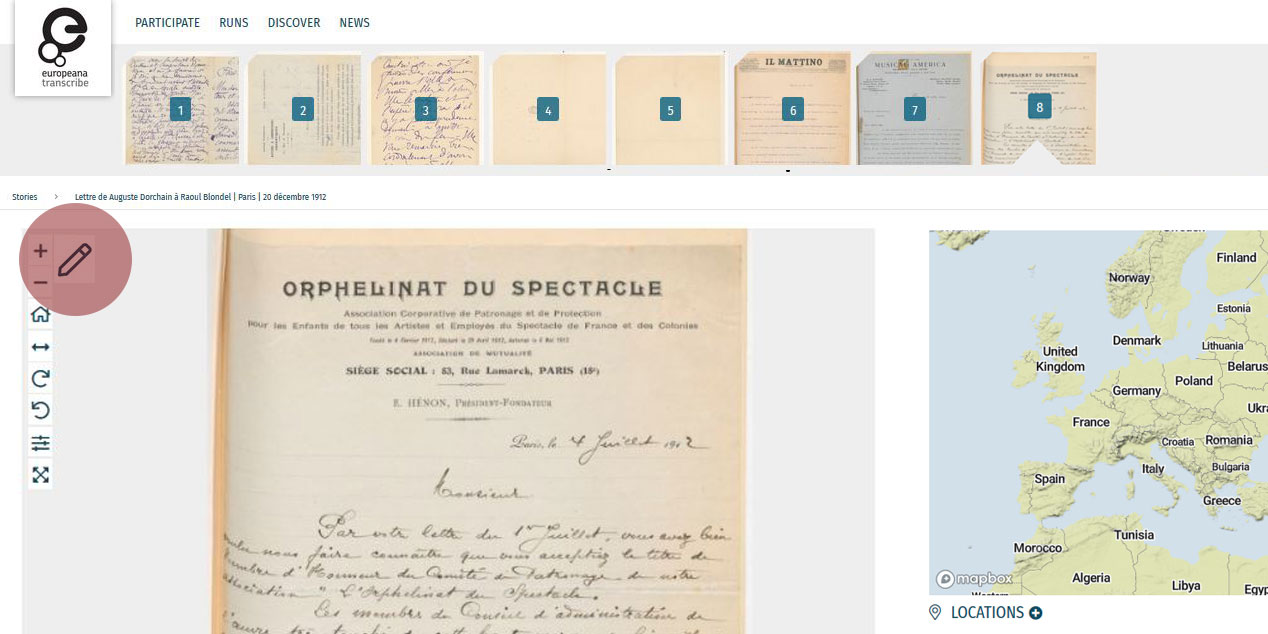
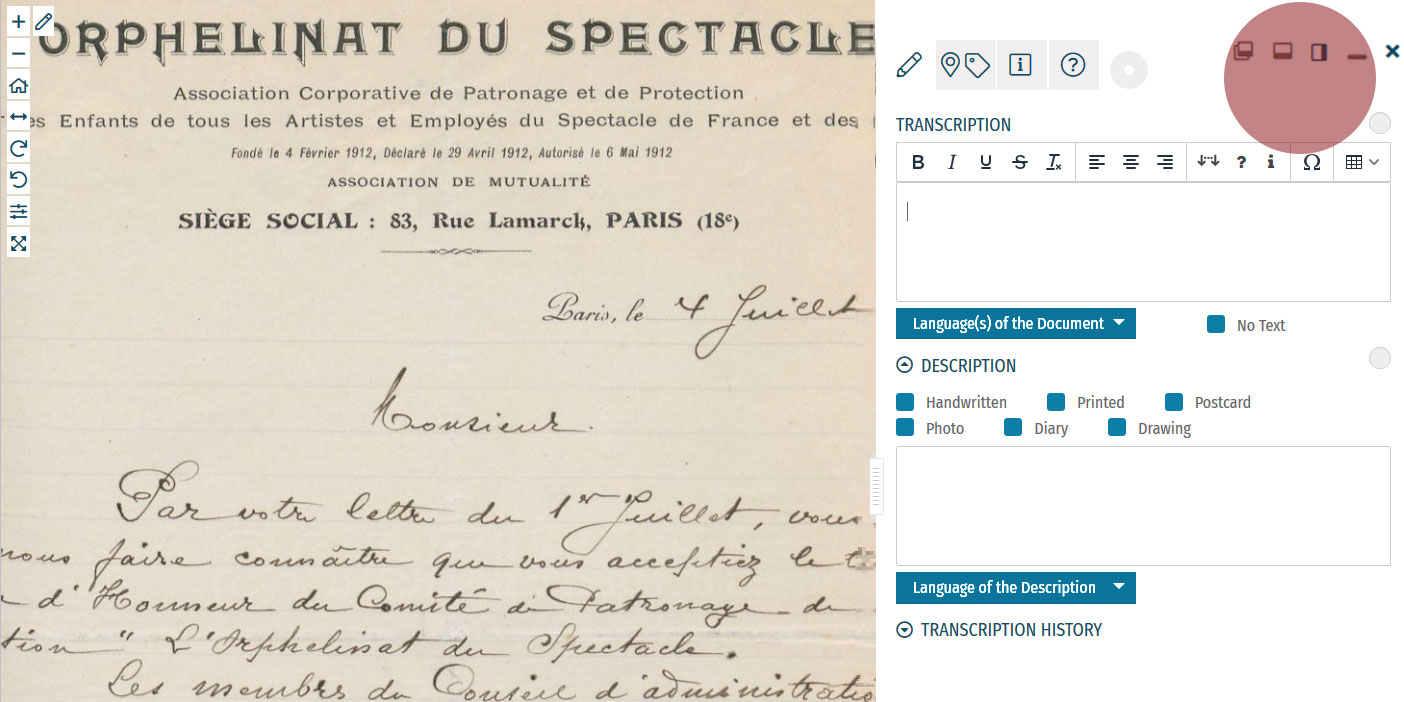
Enrichment Mode
Edit your workspace view by using the top-right menu.
You can have the white Activity Panel docked to the right (default) , to the bottom , or as an independent overlay . If you just want to view the image, you can hide the panel using the minimise button , and then re-open it with the pen button. Adjust the size and position of your Activity Panel according to your preferences.
You enrich documents by following a step-by-step process.
Make sure you regularly save your enrichments in each step to avoid the risk of losing your work.
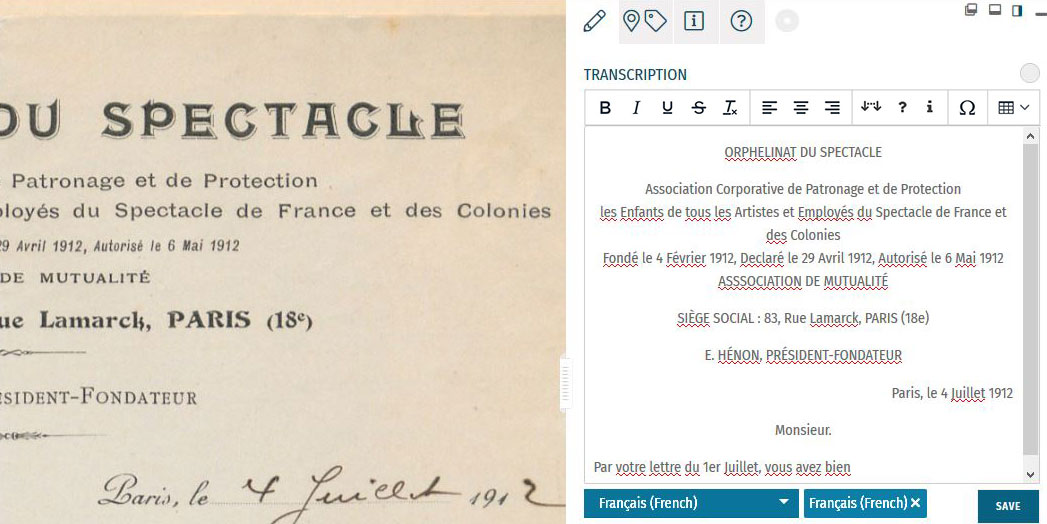
Step 1: Transcription
To start a transcription, select the transcription tab at the top menu of the Activity Panel. Click inside the box underneath the heading TRANSCRIPTION and start writing your transcription. When needed, use the toolbar to format your text and to add special characters and tables. A guide to the transcription toolbar is available in the Formatting section of this tutorial.
Identify the language(s) of the text using the dropdown list under the transcription box. You can select multiple languages at once.
If the item has no text to transcribe, tick the checkbox ‘No Text’.
Once you have finished your transcription, click SAVE.
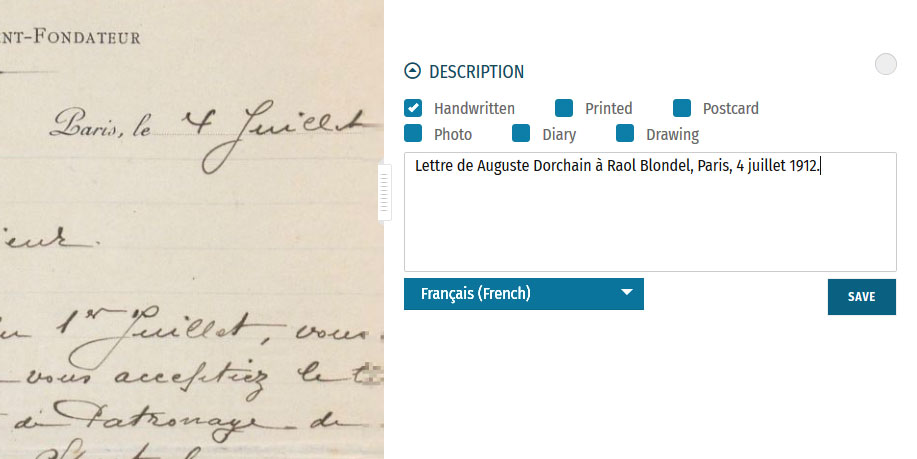
Step 2: Description
You can add a description to the item underneath the Transcription section.
The first task is to identify what type of document the item is: a handwritten or printed document, a postcard, photo, drawing and/or part of a diary. Tick the category which best applies to the item. Multiple categories can be selected at once.
The second task is to write a description of the contents. Click inside the box underneath the heading DESCRIPTION. Here, you can write what the item is, what it is about, and specify the images and objects that appear in the item.
Identify the language of the description text that you wrote using the dropdown list underneath. You can only select one language.
Once you have finished your description, click SAVE.
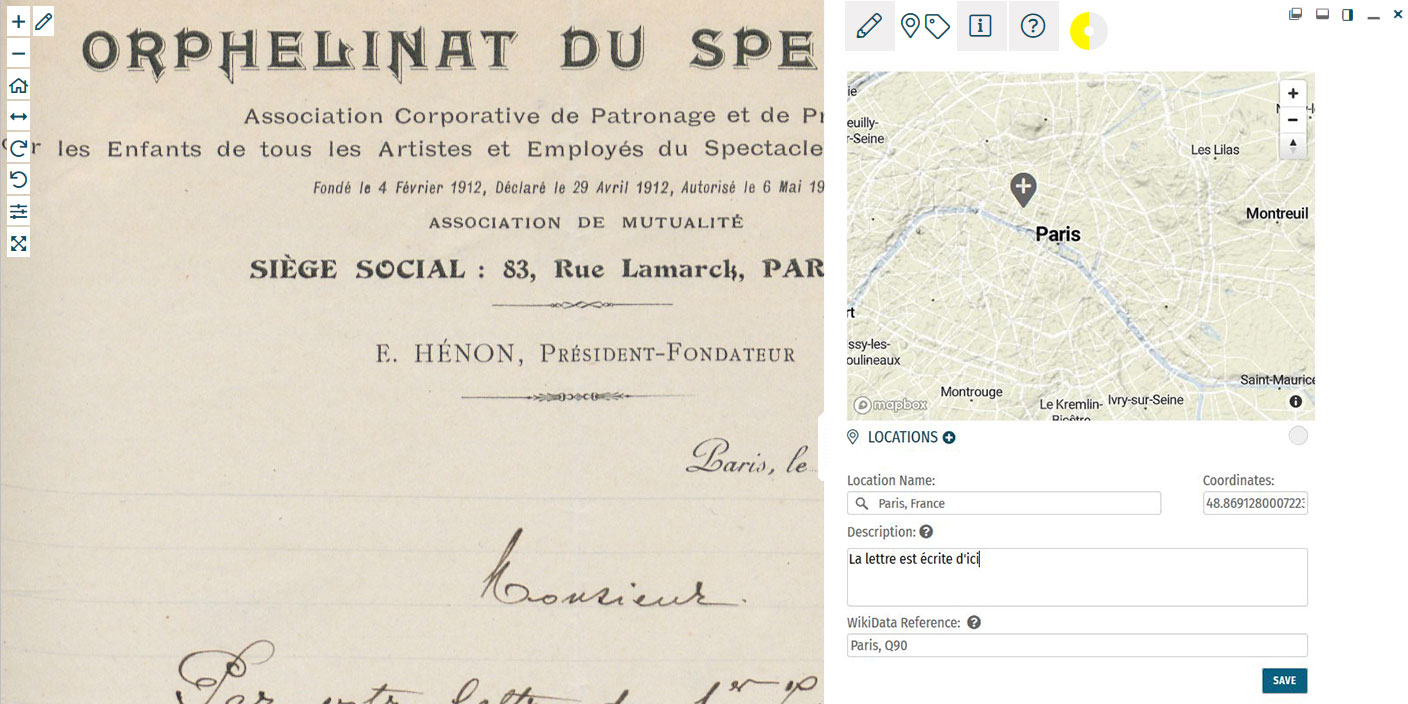
Step 3: Location
If you find a location mentioned or recognise a place in the item, you can create a geotag and pin it to the item map. Multiple locations can be attached to the item. To tag locations, select the tagging tab at the top menu of the Activity Panel. Click the plus next to the heading LOCATIONS. Type the location into the search bar and select the result that best applies. A new pin will be placed into the map. The location name should be a clear georeference, e.g. a country, city or address. Make adjustments to the location name if necessary. You can also adjust the position of the pin by dragging it on the map. If you want to add further details to the location, you can write a (short) description. This could include extra information about the geotag (e.g. the building name or a significant event that took place at the location) or the relevance of the place to the item (e.g. the hometown of the author). You can also add a Wikidata reference to link the location to a stable source. Search for the reference using the Wikidata fields. Once you have finished your location tag, click SAVE. You can find the place(s) tagged to the item in grey at the bottom of the Location(s) section.Step 4: Tagging
Below the Locations section is the Tagging section, where you can add the following annotations:
 Document Date:
Document Date:Here, you can add dates that correspond to the item. This could include the dates mentioned in the text (e.g. in diary pages), the date of a related historical event (e.g. the end of WWI), or when the item was created (e.g. from a dated signature on an illustration). You can either define this as a single date or as a longer time frame.
To tag dates to the item, write the start and end dates in DD/MM/YYYY format in the fields or select the dates by clicking on the calendar.
If you only have one date to add, insert the same date into both start and end fields.
If you don’t know the exact days, you can also tag the date on the scale of months (MM/YYYY) or years (YYYY).
Once you have finished your date tag, click SAVE DATE.
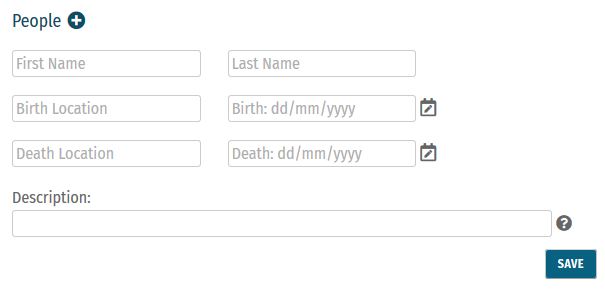 People:
People:People mentioned as creators or subjects in the item can also be tagged. Depending on the information you might have, you can enter the person’s first and last names, as well as their dates of birth and death. There is also the option to write a short description of the person, explaining who they are or their relevance to the item, e.g. the person’s occupation or their relation to another tagged person.
Multiple people can be tagged to one item.
Once you have finished your person tag, click SAVE.
 Keywords:
Keywords:Here, you can freely add keywords related to the topic and content of the item. This could include particular themes (e.g. art, music, war), subjects (e.g. children, cooking, France), or particular historical affiliations (e.g. 20th century, Austro-Hungarian Empire, Fall of the Iron Curtain).
Multiple keywords can be added and they can be written in any language.
Write your keyword tag into the field and click SAVE.
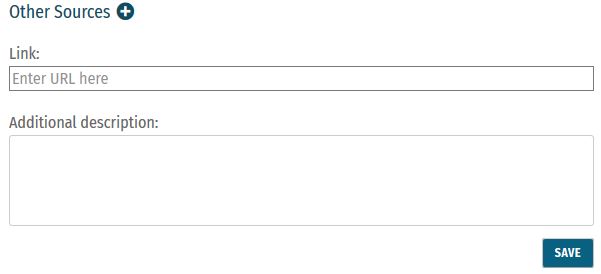 Other Sources:
Other Sources:External websites with information about the item’s content can be linked here. This could include links to further data about a person mentioned, a particular historical event or links to digital versions of newspapers that appear in photos or clippings in a notebook.
To add a link, click the plus next to the heading ‘Other Sources’. Enter the URL into the Link field, and write a short description of this link in the Additional Description field.
Multiple links can be tagged to one item.
Once you have finished your tag, click SAVE.
Step 5: Mark for Review
Once you have saved your contribution, the task will automatically change to the Edit status. If you think the task is finished, you can mark it for review. Note that you have to be at Runner level or above to do this (see: Miles and Levels). Click on the yellow circle next to the section heading and select Review in the list that appears. The task now needs to go under Review by another volunteer.Formatting
Review
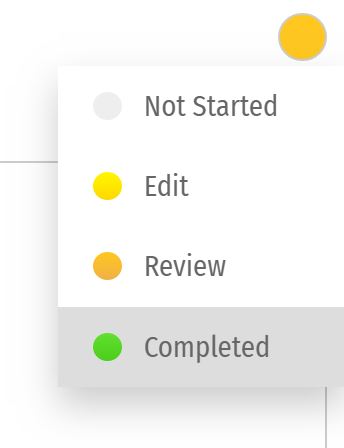 All enrichments need to be edited and reviewed by more than one volunteer to ensure that they are as accurate as possible.
Only Sprinters and Champions can edit tasks in the Review stage and mark them as Complete. (see: Miles and Levels)
You can review a task (Transcription, Description, Locations, or Tagging) when the circle next to the heading is coloured orange .
During the review process, pay close attention to the following requirements:
All enrichments need to be edited and reviewed by more than one volunteer to ensure that they are as accurate as possible.
Only Sprinters and Champions can edit tasks in the Review stage and mark them as Complete. (see: Miles and Levels)
You can review a task (Transcription, Description, Locations, or Tagging) when the circle next to the heading is coloured orange .
During the review process, pay close attention to the following requirements:
-
- Transcription: The complete text in the item has been properly transcribed and the transcription is formatted as accurately as possible. The correct language(s) are selected and the transcription contains no missing or unclear icons.
-
- Description: The description is accurate and detailed (especially items without text to transcribe, e.g. photos), and the appropriate categories have been ticked.
-
- Location(s): All locations have been correctly tagged. The location name is accurate and matches the coordinates and the pin on the map. The description is clear and concise, and the Wikidata reference (if any) is correct.
-
- Tagging: Document dates are completed and as precise as possible. All mentioned people are tagged and their data is correct. All added keywords are applicable to the item, and other sources have accurate information and functioning links.
Completion Statuses
| GREY |
| 1. NOT STARTED |
| Tasks have not been started. |
| YELLOW |
| 2. EDIT MODE |
| Tasks have been started, but not yet finished. Additions and edits can still be made. |
| ORANGE |
| 3. REVIEW |
| Tasks are finished, but need final review by Sprinter or Champion transcribers. |
| GREEN |
| 4. COMPLETED |
| Tasks have been fully completed and reviewed. No further changes need to be made. |
Miles and Levels
Transcribathon is a competitive marathon. You do not enrich documents alone, but compete and work with other volunteers to ensure the quality of your work. When you first create a Transcribathon account, you only have the ability to start and edit tasks. The more you enrich documents, the closer you become to advancing to a higher level, which can unlock abilities like reviewing and completing tasks.| Level | Abilities |
|---|---|
| Trainee | Basic abilities: start and edit tasks |
| Runner | Basic abilities, mark finished tasks for review |
| Sprinter | All Runner abilities, mark reviewed annotations as completed |
| Champion | All Sprinter abilities, mark reviewed transcriptions as completed |
| Tasks | Miles Received |
|---|---|
| Transcription | 1 Mile for every 300 characters transcribed |
| Description | 1 Mile for every 5 Descriptions added |
| Location | 1 Mile for every 5 Locations added |
| Tagging | 1 Mile for every 5 Tags added |
| Reviewing | 1 Mile for every 10 items marked as complete |
